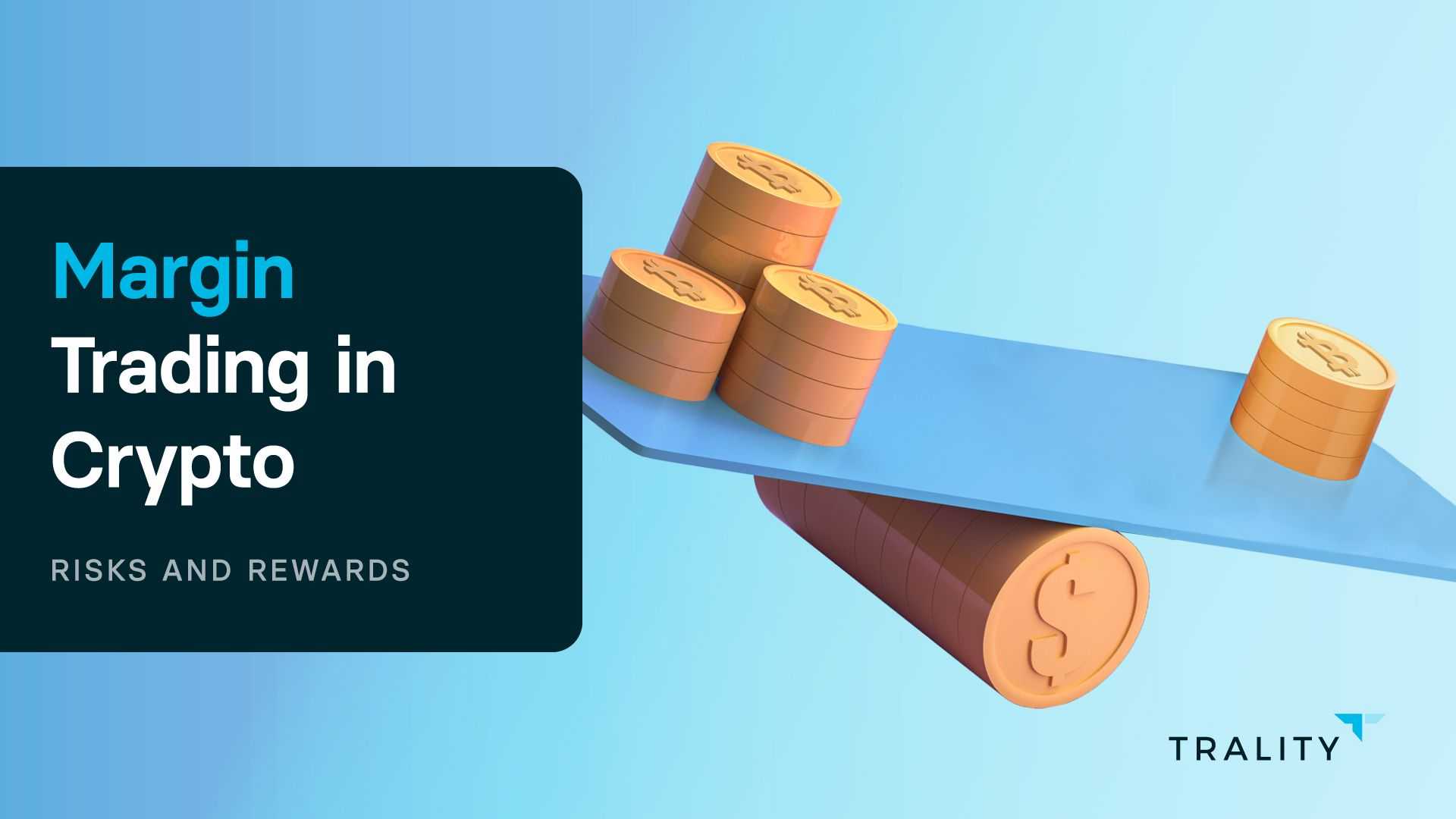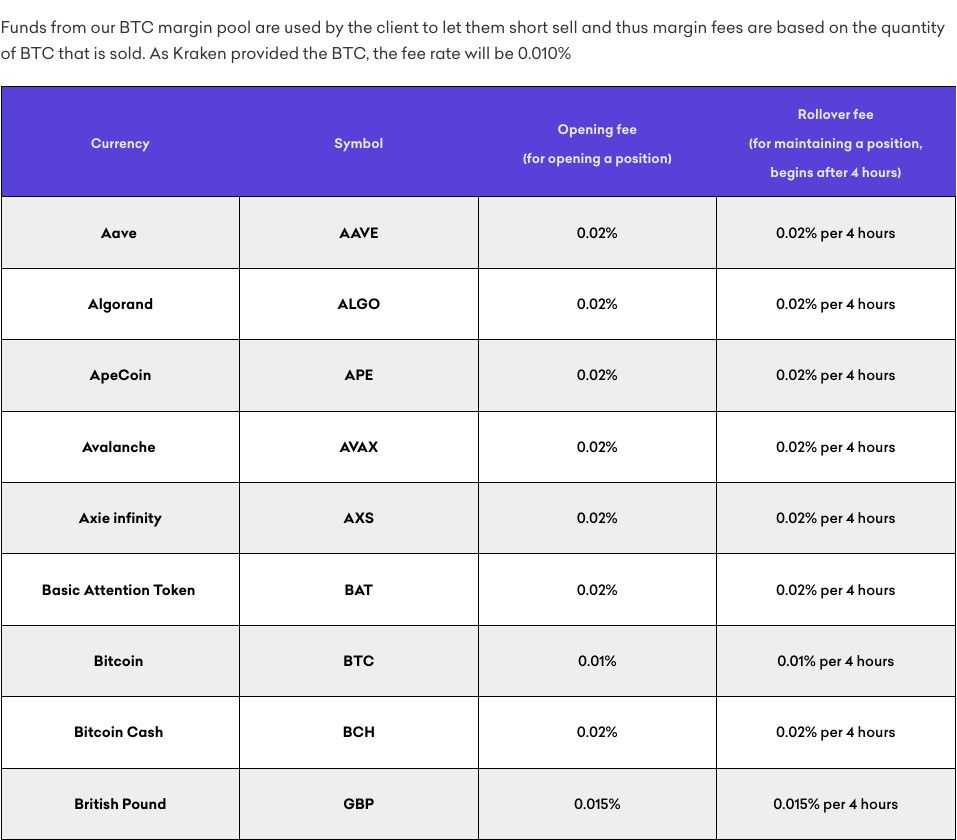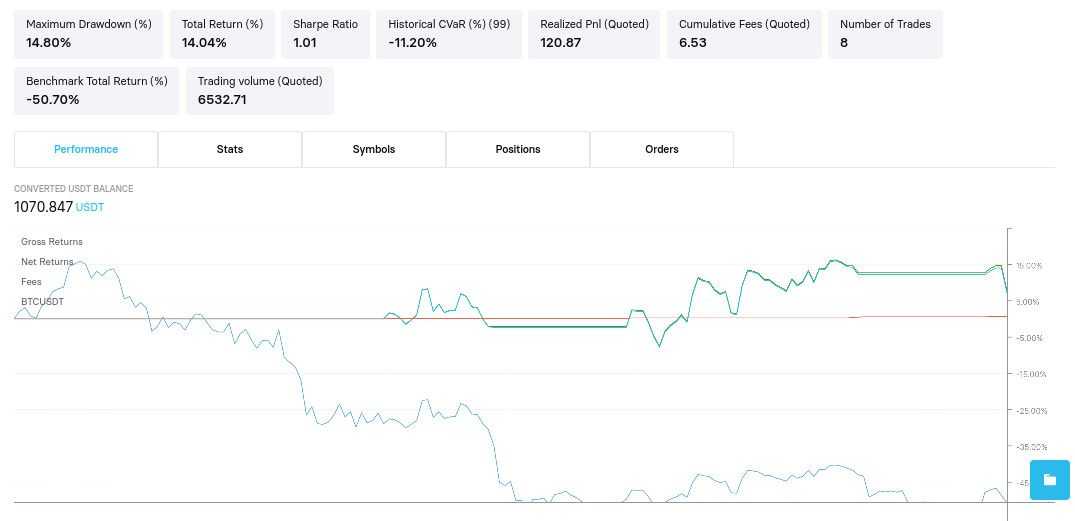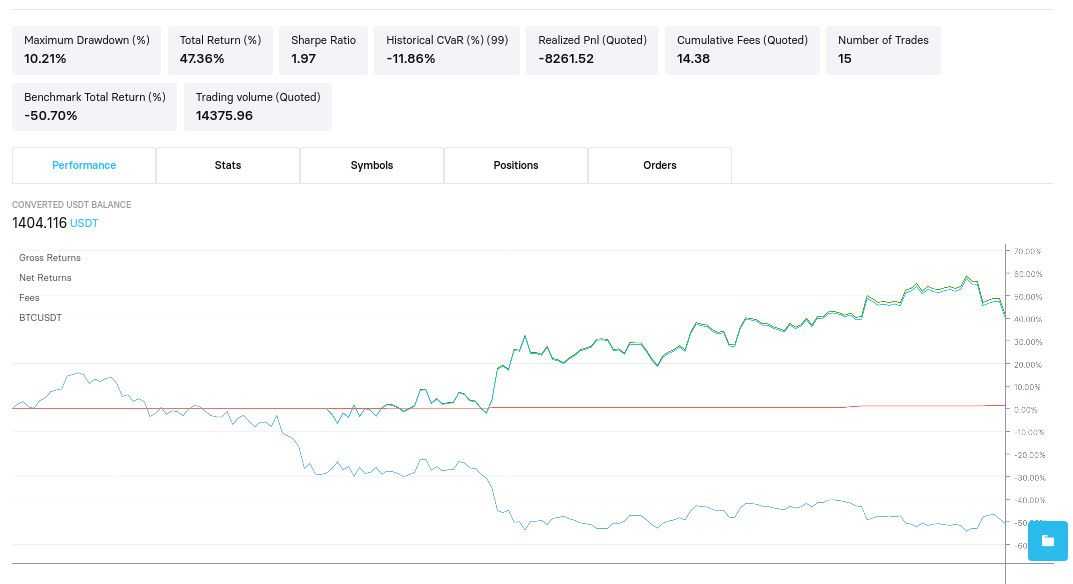Margin Trading Crypto: Risks and Rewards

MORITZ PUTZHAMMER
16 September 2022 • 12 min read

Table of contents
Imagine if you could significantly increase your market exposure with a relatively small trading account. Now imagine if this increased exposure could yield exponentially greater profits during bull and bear markets.
Although there are inherent risks, margin trading allows investors to boost their returns by multiplying their position through leverage. Like many of us, though, you probably have a lot of questions. Can you margin trade crypto? How does margin trading work in crypto? Should you trade crypto on margin? And what is crypto leverage trading?
In the following article, we’ll explore margin trading, examining what it actually entails, its risk and rewards, its terminology, best practices, and the top 10 crypto exchanges for margin trading.
What is Margin Trading?
Buying on margin is a type of trading whereby the trader takes out a loan from an exchange in order to buy more crypto than s/he otherwise would have been able to do given their current cash/coin balance(s). The trader effectively leverages funds provided by a third party to amplify their returns should the trade prove to be successful. You’re opening a position, but only contributing a fraction of the total costs up front.
It's important to note that there are two things to keep in mind. Margin trading and leverage trading are slightly different. And the one of the best ways to margin trade crypto is by creating a margin trading bot, which automates the process and ensures reliable, consistent performance.
Depending on whom you ask, margin trading might be perceived as risky business. Mention the words “credit” or ‘loan” and some traders will freeze faster than Celsius on a hot summer’s day. But purchasing crypto (or securities, for that matter) on margin is a standard investment practice for many. Think about it. When’s the last time that you heard of someone buying a flat or house and paying for it in full. Exactly. The first thing that we need to re-evaluate is the notion that credit is bad. The assumption that real estate always appreciates is no truer than the idea that investing on margin is alway bad. When properly leveraged, credit can be an extremely profitable way of investing, which is why margin trading continues to see strong interest among investors.
How Does Margin Trading Work?
Whereas a brokerage will typically provide the funds for margin traders who are invested in the stock market, other crypto traders themselves usually provide the funds and are incentivized to do so through interest earnings. But how does margin trading actually work? Let’s take a brief look at an overview of the process before delving a bit deeper into the specifics involved.
- The first step is to find a crypto exchange that offers margin trading, and we outline ten of the best later in this article.
- Once you’ve decided on an exchange and opened an account, you then need to ensure that the account has sufficient funds. Various exchanges will have varying requirements in this respect, and so it’s important to understand this aspect before selecting an exchange.
- As soon as you’re good to go in terms of having an approved and funded account, you can start buying crypto using margin up to your margin limit, which is the amount that you have borrowed divided by the total value of your crypto portfolio.
Now let’s zoom in a bit more on the process of margin trading. When a trader initiates a margin trade, s/he must put down a percentage of the order’s total value, thereby creating a leveraged position, which is the ratio of funds that a trader borrows to the margin (the initial investment). If you want to open a position at $10,000 with a leverage of 10:1, you’d need to have $1,000.
It’s important to remember that leverage ratios vary not only according to the type of trading (i.e., stocks, Forex, crypto), but also among crypto exchanges (the range can include 2:1 all the way to 100:1). In the crypto space, you’ll often see leverage ratios written as 2x, 5x, 10x, 50x, 100x).
As you might expect, trading fees and limits will vary based on your chosen exchange, and so you need to do your research and shop around for the exchange best suited to your needs. For example, Kraken offers leverage up to 5x with low rollover fees (never more than 0.02% per 4 hours) and limits up to $500,000 for eligible traders. (The rollover fee is simply a fee that is charged to maintain a position for a certain period of time.)
As Kraken further explains, “margin fees are charged based on the total value of the amount that is extended as margin to effect the margin trade. Collateral also held in the account is not deducted from that amount.” Fees can also vary depending on whether you go long or short on a position. Below is an abbreviated fee structure for short position with Kraken:

To recap, then, margin trading involves borrowing a certain percentage of an asset’s price as well as maintaining a certain equity percentage within the margin account, which acts as collateral in case you lose your entire investment, thereby protecting you the trader as well as the crypto exchange.
Margin Trading Crypto: Some Key Terms
Below are the key terms and concepts that you need to get familiar if you want to start margin trading:
Long and short positions
You can take out two types of positions when margin trading, long and short. A long position assumes that the price of any given crypto will increase in the future, with the trader buying the crypto and selling it at a higher price to make a profit. You initiate a long trade when you buy an asset with the expectation to sell it at a higher price in the future and make a profit.
A short trade is initiated by borrowing an asset to sell it, with the intent to repurchase it at a lower price, take a profit, and return the shares to the owner. Therefore, a short position involves borrowing a crypto to sell it in order to repurchase it at a lower price and take a profit. The expectation here is that the crypto will decrease in value.
Isolated margin trading
As its name suggests, isolated margin trading is the allocation of a margin balance to an individual (isolated) position, the point of which is to limit risk by restricting the amount of margin to it. In the event of a liquidation (defined below), only the trader’s isolated position is impacted rather than the entirety of their margin balance.
Cross margin trading
When using cross margin trading, a trader’s balance is shared in its entirety across all open positions, the point of which in this case is to avoid liquidation. However, in contrast to isolated margin trading, a trader risks losing their margin balance and any open positions should a liquidation be triggered by the exchange.
Margin ratio
The margin ratio is calculated as the value of assets / the total liabilities. The total liabilities is the borrowed principal amount and all interest owed. The exchange ensures that this ratio is greater than 1.1. If this is not the case then the assets owned by the trader will be forced sold and the liabilities repaid. The trader must do everything possible to avoid liquidation.
(Forced) Liquidation
Liquidation—the word just inspires fear, doesn’t it? Do you want to be liquidated? I sure don’t. When discussing crypto margin trading, liquidation occurs when a trader cannot meet the margin requirements for their leveraged position. As a consequence, the exchange has the right to forcibly liquidate the trader’s assets in order to meet the minimum margin requirements. This is an automatic process that is done by the exchange in which assets are sold to increase the margin ratio. Loans are repaid from the proceeds of sales and a fee is also taken by the exchange. In the case of Binance the liquidation fee is 2% of the value of the assets sold. It is important to note that assets not associated with the trade may be sold to repay borrowed currencies. If the trader owns BTC and also has a 3x leverage long on LUNA then some of the BTC will be sold in the case that LUNA goes to zero.
Margin Trading Versus Spot Trading
Spot trading is typically defined as the ongoing process of buying and selling crypto at the market rate (“spot” price). The trader’s aim is to profit from fluctuations in price by selling their crypto on a spot market. Obviously, traders using this approach aren’t interested in longer time frames; the point is quick, multiple, small trades.
Margin trading, on the other hand, is riskier, more complex, and far more profitable than spot trading as a result. Positions can be short or long and margin traders often trade in bull and bear markets. In this case, traders assume a level of debt by borrowing from an exchange in order to speculate on the price movements of a given coin or coins. The primary goal here is to amplify returns.
Advantages of Margin Trading Crypto
As mentioned earlier, perhaps the most attractive advantage of margin trading is the ability to increase profits (due to leverage) if a trade is successful. As a consequence, margin trading increases your buying power, enabling you to invest more than you otherwise would as well as invest more in crypto with higher prices such as BTC.
Margin trading allows you to diversify your portfolio. If you’re limited to your cash on hand, then your investment options might also be limited. With margin trading, you can take out positions in multiple cryptocurrencies and thereby spread out your risk across multiple tokens.
In terms of boosting returns, margin trading turbocharges your investing by allowing you to maximize gains, particularly during a bull market. In fact, one researcher has found that “margin trading has the basic functions of making the market stable, discovering price and improving liquidity.” Another benefit: liquidity. Trading on margin provides much needed liquidity to traders looking to squeeze out as much profit from the crypto market as possible.
Margin Trading and Shorting
Margin trading allows the ability to borrow an asset and sell it immediately. This process of borrowing and selling is known as short selling. Short selling is advantageous in bear markets as profits can be made when prices decline. And, as we can see in the charts below, margin trading and shorting test results using Trality’s backtester show a significant increase in profits when compared to a long-only strategy.
This can be vital not only during bear markets, as previously mentioned, but also when opening short positions that anticipate downward price movements, as in the case of the current crypto market. Crucially, “shorting” allows an investor to profit whether the market is moving up or down, making margin trading something that you can do in any market condition.
The chart below is a long-only trend following strategy. During periods in which there is a bearish trend, it closes its position, which can be seen in the equity chart as a flat spot. A long-short margin trading bot does not have this limitation and is able to take short positions when the indicator gives a bearish trend signal.

In the chart below, the equity curve is from a long-short margin trading bot. Not only does it not have flat spots, but it is able to take advantage of market sell-offs, leading to a smoother and higher return for the same time period.

Risks of Margin Trading Crypto
The flip side of the margin trading coin is higher risk. If margin trading amplifies gains, it also amplifies losses and traders can find themselves losing more than their initial investment in addition to having to pay interest on their loan, which can add insult to injury.
There are two main types of risk associated with margin trading.
Shorting Risk
The risk associated with short is that the asset price moves up without stopping. If the case of buying an asset the price can only go to 0. In the case of the price going up, there is no limit. A short trade will be closed when the losses exceed the value of the collateral in the account. The position will be liquidated and the loans on the shorted asset repaid.
Leverage risk
If the trader has borrowed to buy an asset then the margin account may be liquidated before the asset price has reached zero. In the case where leverage is 2x if the value of the asset falls by about 50%, the account will be liquidated. The maximum leverage allowed for cross margin on binance is 3x. If a position is 3x leveraged then it only takes a drop of about 33% for the account to be liquidated.
The bottom line: credit can be risky or rewarding depending on known and unknown variables. When it comes to margin trading, ensure that you fully understand the risks and additional costs associated with it (e.g., interest rates, maintenance requirements) and weigh those risks against the potential rewards, which are significant.
Margin Call
Unlike day trading and arbitrage, margin trading can be done for short or long positions, but your assets on the exchange serve as collateral, meaning that the exchange can actually sell your assets if your position falls below a certain threshold.
In addition to being a fairly decent 2011 film about a Wall Street investment firm during the outbreak of the 2007 financial crisis, a margin call is when the equity in your account falls below a certain threshold (“maintenance margin”) beyond which the exchange sees as a risk. It will then issue a margin call, prompting the trader to add additional funds to the account to bring the balance back above the minimum requirements.
If a trader is unable to do so, then the exchange has the right to liquidate some of the trader’s assets in order to raise the account balance to the required threshold. While the involuntary selling of assets might sound distasteful, it is a protective measure. In the case of Kraken, for example, the margin liquidation level is approximately 40%, but the precise level can vary based on price volatility.
To summarize, a margin call is triggered when the margin account no longer meets minimum margin trading requirements due to losses incurred by underperforming investments. If a trader is unable to meet the required level, the exchange reserves the right to automatically liquidate assets in the trading account in order to cover the losses and thereby bring the margin trading account back into compliance with minimum margin requirements.
Margin Trading Best Practices
As with any of the aforementioned trading approaches, whether arbitrage, momentum trading, quant trading, or otherwise, the key is to understand the mechanics, risks, and rewards. Everything flows from this basic starting point, making it priority number one when thinking about best practices.
Moderation and margin trading
Margin trading is something that a trader should do in moderation. Given its risks, it should not be a trader’s sole approach to trading. Nor should it be something that a trader does for long periods of time.
Borrowing and margin trading
If we recall the example of Kraken, just because a trader might be eligible to borrow up to $500,000 doesn’t mean that s/he should borrow the maximum amount. Rather, a prudent approach would be to borrow less than the allowed limit. Work into your positions with smaller amounts over time until you have gained the confidence and experience to assume more risk and possibly more reward as a result.
Margin trading and interest
No matter how you look at it, a loan is a loan. The longer the loan, the more money you will pay in terms of interest and maintenance fees. That’s why it’s important to borrow for the short term in order to minimize higher interest and fees.
Margin trading and smart investing
You’ve read it a thousand times, but never invest more than you can afford to lose. The same applies to margin trading. While rewards can stack up quickly, margin trading can amplify losses, sometimes to a factor of two or more. Savvy investors will have planned for the worst-case scenario, a margin call, in the event that they suffer (and must necessarily weather) temporary losses if the market moves against their position.
Top 10 Margin Trading Crypto Exchanges
Now that you know about the mechanics of margin trading along with the risks, rewards, and best practices, you might be interested in trying margin trading for yourself. We’ve put together a handy list of the top 10 crypto exchanges for margin trading:
- Binance
- Kraken
- Bybit
- KuCoin
- PrimeXBT
- Bitmex
- Phemex
- Margex
- Stormgain
- eToro
And for a deep dive into everything you need to know about margin trading exchanges, including their fee structures and leverage amounts, check out our dedicated article, "Best Crypto Margin Trading Exchanges," in which he choose our top five as well as a number that received honorable mention.
The Bottom Line
If you’re new to margin trading, then do your own research. Compare the various fee structures and advantages and disadvantages of various crypto margin trading exchanges. Once you’ve selected one, start off with smaller positions to gain some exposure and build confidence.
In this respect, margin trading is no different than any other form of trading. The stakes are high and you stand to make impressive gains, if successful, but those gains can quickly turn into losses.
Margin trading can be an exciting, effective way to boost your returns. However, investors should understand the associated risks by thoroughly researching the mechanics of margin trading as well as ensuring a sound understanding of its various pros and cons.





